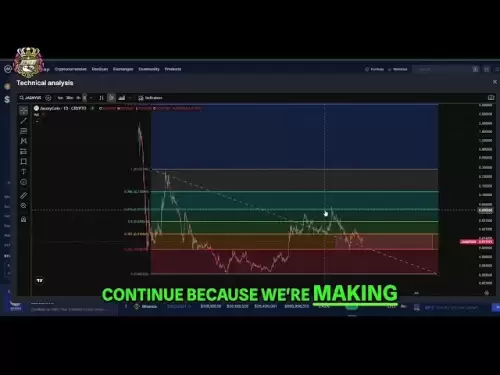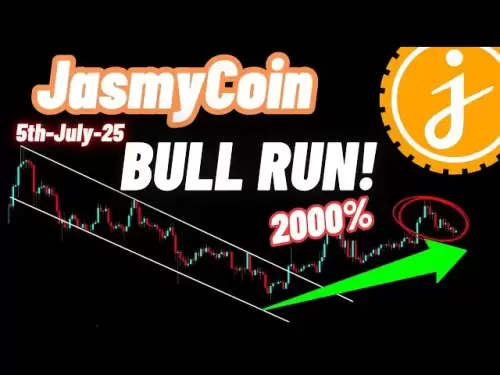-
 Bitcoin
Bitcoin $108,017.2353
-0.81% -
 Ethereum
Ethereum $2,512.4118
-1.58% -
 Tether USDt
Tether USDt $1.0002
-0.03% -
 XRP
XRP $2.2174
-1.03% -
 BNB
BNB $654.8304
-0.79% -
 Solana
Solana $147.9384
-1.76% -
 USDC
USDC $1.0000
-0.01% -
 TRON
TRON $0.2841
-0.76% -
 Dogecoin
Dogecoin $0.1636
-2.09% -
 Cardano
Cardano $0.5726
-1.72% -
 Hyperliquid
Hyperliquid $39.1934
1.09% -
 Sui
Sui $2.9091
-0.59% -
 Bitcoin Cash
Bitcoin Cash $482.1305
0.00% -
 Chainlink
Chainlink $13.1729
-1.54% -
 UNUS SED LEO
UNUS SED LEO $9.0243
-0.18% -
 Avalanche
Avalanche $17.8018
-1.90% -
 Stellar
Stellar $0.2363
-1.69% -
 Toncoin
Toncoin $2.7388
-3.03% -
 Shiba Inu
Shiba Inu $0.0...01141
-1.71% -
 Litecoin
Litecoin $86.3646
-1.98% -
 Hedera
Hedera $0.1546
-0.80% -
 Monero
Monero $311.8554
-1.96% -
 Dai
Dai $1.0000
-0.01% -
 Polkadot
Polkadot $3.3473
-2.69% -
 Ethena USDe
Ethena USDe $1.0001
-0.01% -
 Bitget Token
Bitget Token $4.3982
-1.56% -
 Uniswap
Uniswap $6.9541
-5.35% -
 Aave
Aave $271.7716
0.96% -
 Pepe
Pepe $0.0...09662
-1.44% -
 Pi
Pi $0.4609
-4.93%
How to operate Binance futures trading? What is the forced liquidation mechanism?
Binance Futures allows trading of USDT-margined and Coin-margined contracts, offering high liquidity and advanced features for crypto speculation.
Apr 28, 2025 at 01:49 am
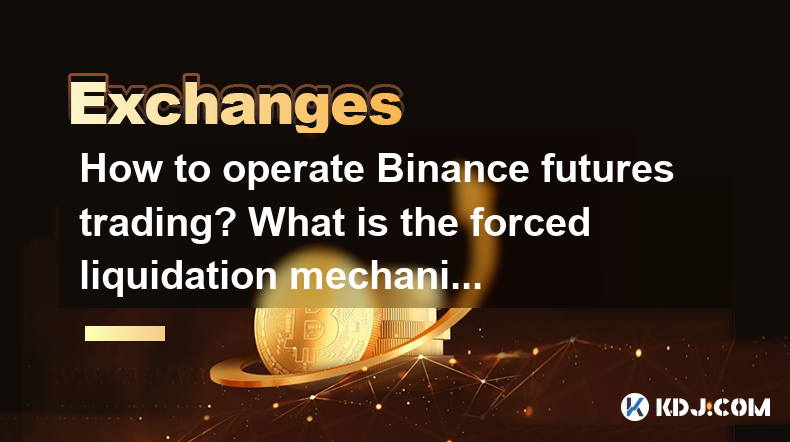
Introduction to Binance Futures Trading
Binance futures trading allows users to speculate on the future price of cryptocurrencies, offering the potential for high returns but also carrying significant risks. Binance Futures is a derivative product that enables traders to buy or sell contracts based on the future value of an asset. This platform is popular among traders due to its liquidity, range of trading pairs, and advanced trading features.
Getting Started with Binance Futures
To begin trading on Binance Futures, you need to follow a few initial steps:
- Register an account on Binance: If you don't already have a Binance account, you'll need to sign up. Visit the Binance website, click on "Register," and fill in your details.
- Complete the KYC process: Binance requires users to complete a Know Your Customer (KYC) verification to comply with regulatory standards. This involves submitting personal identification documents.
- Enable Futures Trading: Once your account is set up and verified, navigate to the Binance Futures section. Click on "Futures" from the top menu, then select "USDT-M Futures" or "Coin-M Futures" depending on your preference. Click on "Open Now" to enable futures trading.
Understanding Binance Futures Contracts
Binance offers two types of futures contracts:
- USDT-Margined Futures: These contracts are settled in USDT, a stablecoin pegged to the US dollar. They are popular for their stability and ease of use.
- Coin-Margined Futures: These contracts are settled in the cryptocurrency of the underlying asset. They are suitable for traders who want to hold the actual cryptocurrency.
Each contract has specific details like the contract size, leverage, and expiration date. It's crucial to understand these details before trading.
How to Place a Futures Order on Binance
Placing a futures order on Binance involves several steps:
- Navigate to the Futures Trading Page: After enabling futures trading, go to the "Futures" section and select the type of futures you want to trade.
- Select a Trading Pair: Choose the cryptocurrency pair you wish to trade. Popular pairs include BTC/USDT and ETH/USDT.
- Choose Your Order Type: Binance offers various order types such as:
- Market Order: Executes immediately at the current market price.
- Limit Order: Executes at a specified price or better.
- Stop-Limit Order: Triggers a limit order when the market reaches a specified price.
- Set Your Leverage: Decide on the amount of leverage you want to use. Higher leverage increases both potential profits and risks.
- Enter the Order Details: Input the quantity of contracts you want to trade and the price (for limit and stop-limit orders).
- Confirm and Place the Order: Review your order details and click "Buy/Long" or "Sell/Short" to place the order.
Managing Your Futures Positions
Once you have open positions, it's essential to manage them effectively:
- Monitor Your Positions: Regularly check the status of your open positions on the "Positions" tab. Pay attention to unrealized profits and losses.
- Adjust Your Leverage: You can increase or decrease your leverage at any time, which affects your margin requirements.
- Use Stop-Loss and Take-Profit Orders: These orders help automate your trading strategy by closing positions at predetermined levels to lock in profits or limit losses.
Understanding the Forced Liquidation Mechanism
Forced liquidation is a critical aspect of futures trading that occurs when a trader's position cannot meet the margin requirements. Here's how it works:
- Maintenance Margin: This is the minimum amount of margin required to keep a position open. If the account balance falls below this level, the position is at risk of liquidation.
- Liquidation Price: The price at which your position will be liquidated. It's calculated based on your entry price, leverage, and the maintenance margin rate.
- Liquidation Process: If the market moves against your position and your margin falls below the maintenance margin, Binance will automatically close your position to prevent further losses. The liquidation price is designed to ensure that the losses do not exceed the initial margin.
Risk Management in Binance Futures Trading
Effective risk management is crucial for successful futures trading:
- Set Stop-Loss Orders: Always use stop-loss orders to limit potential losses. Determine your risk tolerance and set the stop-loss accordingly.
- Diversify Your Portfolio: Don't put all your funds into a single trade. Diversify across different assets and trading strategies.
- Use Lower Leverage: While higher leverage can amplify profits, it also increases the risk of liquidation. Start with lower leverage until you gain more experience.
- Monitor Market Conditions: Stay informed about market trends, news, and events that could impact cryptocurrency prices.
Frequently Asked Questions
Q1: Can I trade futures on Binance without completing KYC?
A1: No, you must complete the KYC process to enable futures trading on Binance. This is a regulatory requirement to prevent fraud and ensure the security of the platform.
Q2: What happens if my futures position is liquidated?
A2: If your position is liquidated, Binance will automatically close your position at the liquidation price. Any remaining funds in your account after covering the losses will be available for withdrawal or further trading.
Q3: How can I check my liquidation price on Binance Futures?
A3: You can check your liquidation price on the "Positions" tab within the Binance Futures interface. It will be displayed alongside your open positions, allowing you to monitor your risk exposure.
Q4: Is there a fee for trading futures on Binance?
A4: Yes, Binance charges trading fees for futures transactions. The fee structure varies depending on your trading volume and whether you are a maker or a taker in the trade. You can find detailed fee information on the Binance website.
Disclaimer:info@kdj.com
The information provided is not trading advice. kdj.com does not assume any responsibility for any investments made based on the information provided in this article. Cryptocurrencies are highly volatile and it is highly recommended that you invest with caution after thorough research!
If you believe that the content used on this website infringes your copyright, please contact us immediately (info@kdj.com) and we will delete it promptly.
- PEPE, BONK, and Remittix: Meme Coins Meet Real-World Utility
- 2025-07-06 02:30:13
- Score Big This Weekend with BetMGM Bonus Code for MLB Games
- 2025-07-06 02:50:13
- PENGU Token's eToro Debut and Weekly Surge: What's Driving the Hype?
- 2025-07-06 02:30:13
- Singapore's Crypto Crackdown: Laundering, Licenses, and Lessons
- 2025-07-06 02:50:13
- Royal Mint Coins: Unearthing the Rarest Queen Elizabeth II Treasures
- 2025-07-06 00:30:12
- BlockDAG, SEI, and HYPE: Decoding the Crypto Buzz in the Big Apple
- 2025-07-06 00:50:13
Related knowledge
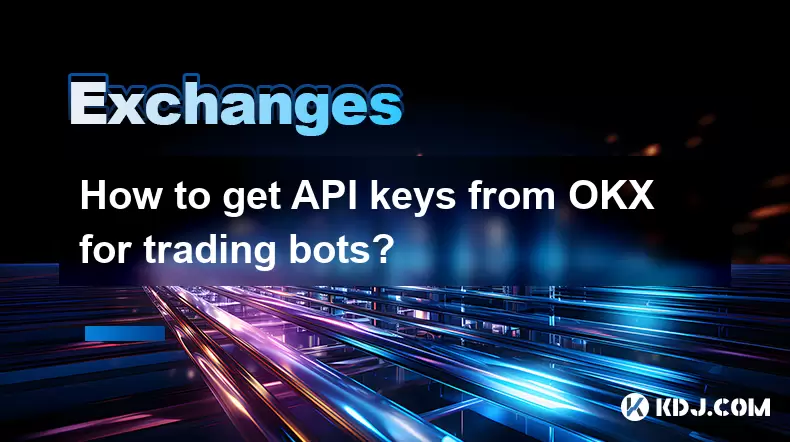
How to get API keys from OKX for trading bots?
Jul 03,2025 at 07:07am
Understanding API Keys on OKXTo interact with the OKX exchange programmatically, especially for building or running trading bots, you need to obtain an API key. An API (Application Programming Interface) key acts as a secure token that allows your bot to communicate with the exchange's servers. On OKX, these keys come with customizable permissions such ...
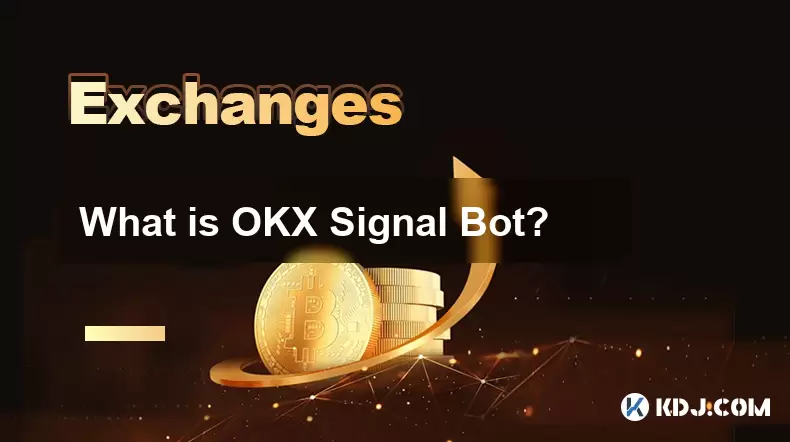
What is OKX Signal Bot?
Jul 02,2025 at 11:01pm
Understanding the Basics of OKX Signal BotThe OKX Signal Bot is a feature within the OKX ecosystem that provides users with automated trading signals and execution capabilities. Designed for both novice and experienced traders, this bot helps identify potential trading opportunities by analyzing market trends, technical indicators, and historical data. ...
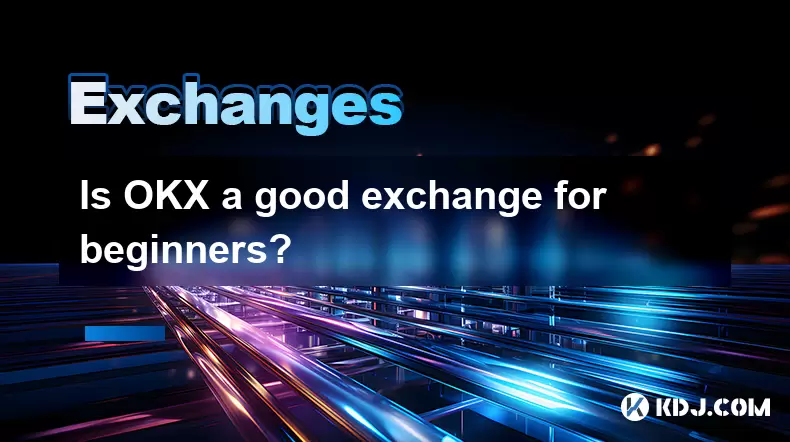
Is OKX a good exchange for beginners?
Jul 03,2025 at 05:00pm
What Is OKX and Why Is It Popular?OKX is one of the leading cryptocurrency exchanges globally, known for its robust trading infrastructure and a wide variety of digital assets available for trading. It supports over 300 cryptocurrencies, including major ones like Bitcoin (BTC), Ethereum (ETH), and Solana (SOL). The platform has gained popularity not onl...
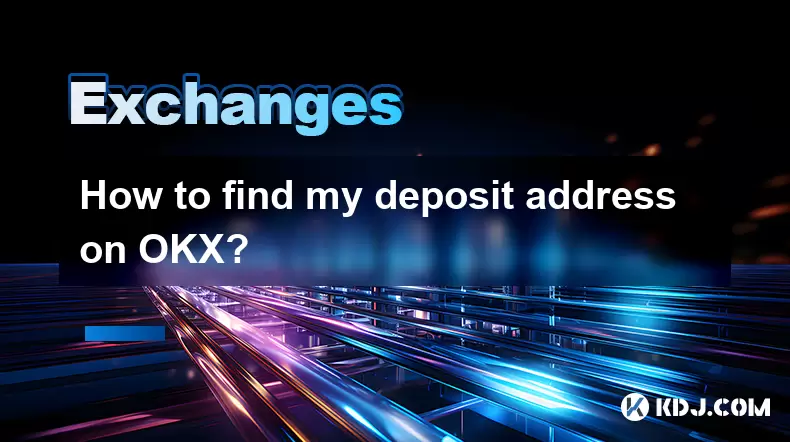
How to find my deposit address on OKX?
Jul 06,2025 at 02:28am
What is a Deposit Address on OKX?A deposit address on OKX is a unique alphanumeric identifier that allows users to receive cryptocurrencies into their OKX wallet. Each cryptocurrency has its own distinct deposit address, and using the correct one is crucial to ensure funds are received properly. If you're looking to transfer digital assets from another ...
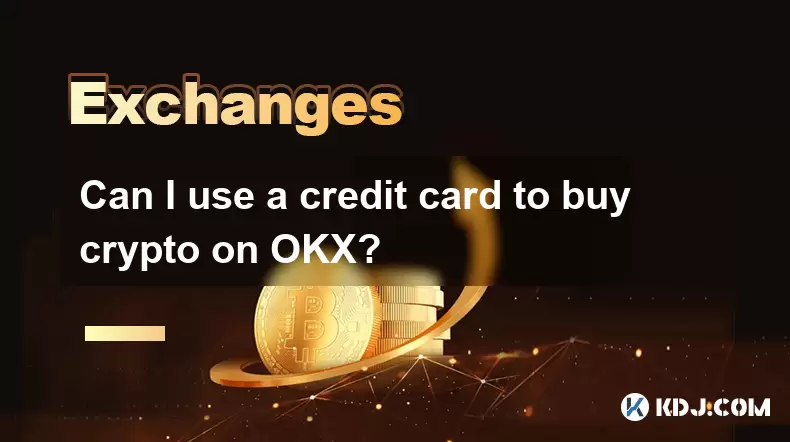
Can I use a credit card to buy crypto on OKX?
Jul 04,2025 at 04:28am
Understanding OKX and Credit Card PaymentsOKX is one of the leading cryptocurrency exchanges globally, offering a wide range of services including spot trading, derivatives, staking, and more. Users often wonder whether they can use a credit card to buy crypto on OKX, especially if they are new to the platform or looking for quick ways to enter the mark...
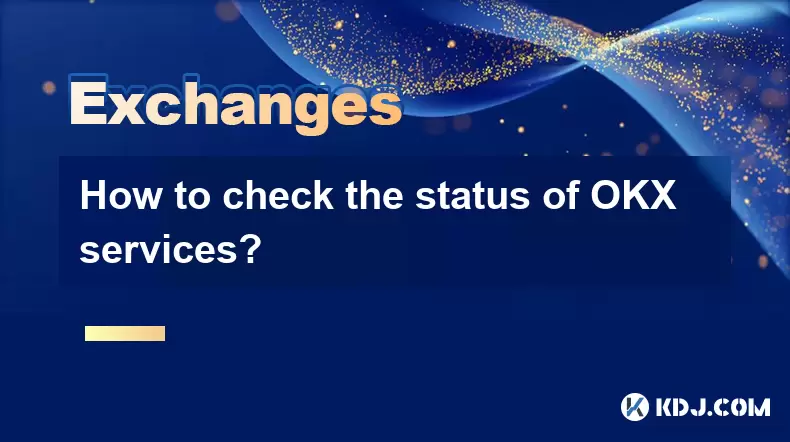
How to check the status of OKX services?
Jul 02,2025 at 11:14pm
What is OKX, and Why Checking Service Status Matters?OKX is one of the world’s leading cryptocurrency exchanges, offering services such as spot trading, futures trading, staking, and more. With millions of users relying on its platform for daily transactions, it's crucial to know how to check the status of OKX services. Downtime or maintenance can affec...

How to get API keys from OKX for trading bots?
Jul 03,2025 at 07:07am
Understanding API Keys on OKXTo interact with the OKX exchange programmatically, especially for building or running trading bots, you need to obtain an API key. An API (Application Programming Interface) key acts as a secure token that allows your bot to communicate with the exchange's servers. On OKX, these keys come with customizable permissions such ...

What is OKX Signal Bot?
Jul 02,2025 at 11:01pm
Understanding the Basics of OKX Signal BotThe OKX Signal Bot is a feature within the OKX ecosystem that provides users with automated trading signals and execution capabilities. Designed for both novice and experienced traders, this bot helps identify potential trading opportunities by analyzing market trends, technical indicators, and historical data. ...

Is OKX a good exchange for beginners?
Jul 03,2025 at 05:00pm
What Is OKX and Why Is It Popular?OKX is one of the leading cryptocurrency exchanges globally, known for its robust trading infrastructure and a wide variety of digital assets available for trading. It supports over 300 cryptocurrencies, including major ones like Bitcoin (BTC), Ethereum (ETH), and Solana (SOL). The platform has gained popularity not onl...

How to find my deposit address on OKX?
Jul 06,2025 at 02:28am
What is a Deposit Address on OKX?A deposit address on OKX is a unique alphanumeric identifier that allows users to receive cryptocurrencies into their OKX wallet. Each cryptocurrency has its own distinct deposit address, and using the correct one is crucial to ensure funds are received properly. If you're looking to transfer digital assets from another ...

Can I use a credit card to buy crypto on OKX?
Jul 04,2025 at 04:28am
Understanding OKX and Credit Card PaymentsOKX is one of the leading cryptocurrency exchanges globally, offering a wide range of services including spot trading, derivatives, staking, and more. Users often wonder whether they can use a credit card to buy crypto on OKX, especially if they are new to the platform or looking for quick ways to enter the mark...

How to check the status of OKX services?
Jul 02,2025 at 11:14pm
What is OKX, and Why Checking Service Status Matters?OKX is one of the world’s leading cryptocurrency exchanges, offering services such as spot trading, futures trading, staking, and more. With millions of users relying on its platform for daily transactions, it's crucial to know how to check the status of OKX services. Downtime or maintenance can affec...
See all articles





















